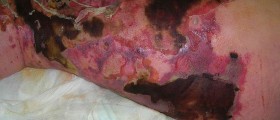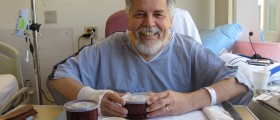
Cellulitis is a medical term used for non-necrotizing inflammation of the skin and the underlying (subcutaneous) tissue. The condition develops as a consequence of acute infection that remains localized onto the skin and subcutaneous tissue not affecting the underlying fascia and muscles. Such inflammation is typically accompanied by localized swelling, pain and tenderness of the inflamed area, warmth and redness of the skin.
It may be challenging to differentiate cellulitis from abscess in clinical practice. Still, it is essential to known that cellulitis represents inflammation of the skin and underlying connective tissue while abscess represents a collection of puss that may form in any part of the body. Abscess may be one of clinical features of cellulitis.
Collecting Relevant Data
Doctors pay special attention to patients history when diagnosing cellulitis. Patients do not have to report recent trauma which is a crucial information regarding the onset of inflammation. Namely, cellulitis develops a few days after some sort of trauma. If one reports recent trauma, he/she is asked to thoroughly describe all the circumstance s regarding the injury. Relevant data is essential for easier diagnosing the potential microorganism responsible for the infection which helps doctor even more to opt for the most suitable medication (antibiotic) they are going to prescribe.
Additionally, patients are asked about the presence of some other skin disorders like fungal infections or a history of dermatitis. These conditions make the skin more susceptible to cellulitis. Risk is also increased in people suffering from diabetes mellitus, HIV, chronic kidney disease and liver malfunctioning.
Finally, it is important to report recent surgical procedures and operation which may be a door for the infection. In such case cellulitis actually develops as a postsurgical complication.Cellulitis Clinical Characteristics
The affected area requires thorough examination. Patients develop 4 cardinal signs of cellulitis including erythema, edema, pain and warmth. Physical examination is also essential for establishing the severity of the condition and making decision regarding the treatment.
The affected skin is red, hot and edematous. It is also tender to touch. The affected area is not clearly separated from the surrounding healthy tissue. Patients may additionally develop regional lymphadenopathy (enlarged lymph nodes).
Many times cellulitis affects the legs. Still, it may develop in other parts of the body as well. Progression of infection is accompanied by malaise, chills, fever and sometimes even toxicity occurs.
If there are symptoms and signs of rapid progression of the infection, these may point to the presence of more complex and severe conditions (like necrotizing fasciitis). Such condition require prompt treatment.
Majority of patients fully recover after being prescribed oral antibiotics. If the infection does not respond to oral antibiotics, they are administered intravenously.
Potential complications of cellulitis include lymphangitis, abscess, gangrenous cellulitis and necrotizing fasciitis.

















Your thoughts on this
Loading...